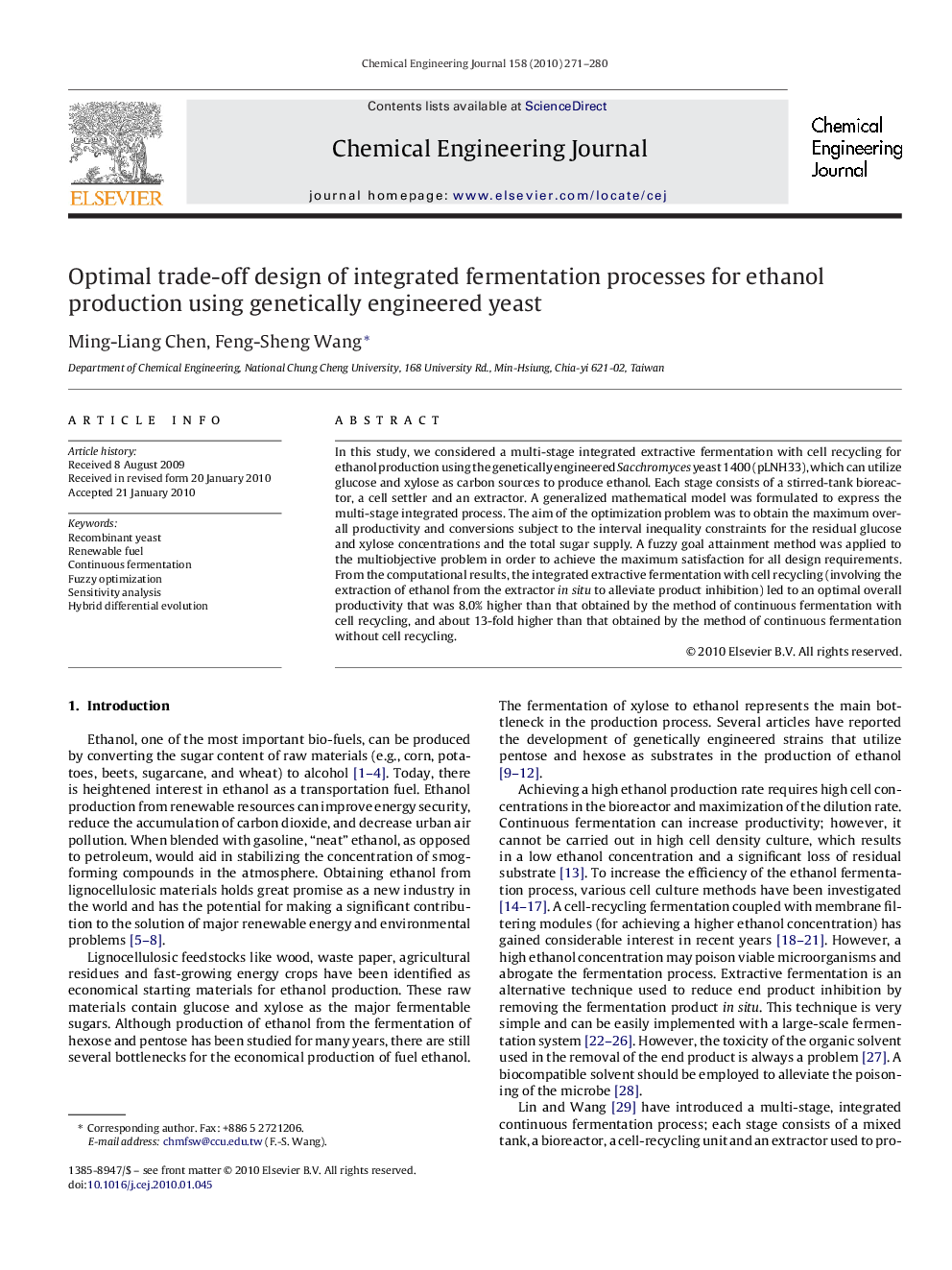| Article ID | Journal | Published Year | Pages | File Type |
|---|---|---|---|---|
| 152100 | Chemical Engineering Journal | 2010 | 10 Pages |
In this study, we considered a multi-stage integrated extractive fermentation with cell recycling for ethanol production using the genetically engineered Sacchromyces yeast 1400 (pLNH33), which can utilize glucose and xylose as carbon sources to produce ethanol. Each stage consists of a stirred-tank bioreactor, a cell settler and an extractor. A generalized mathematical model was formulated to express the multi-stage integrated process. The aim of the optimization problem was to obtain the maximum overall productivity and conversions subject to the interval inequality constraints for the residual glucose and xylose concentrations and the total sugar supply. A fuzzy goal attainment method was applied to the multiobjective problem in order to achieve the maximum satisfaction for all design requirements. From the computational results, the integrated extractive fermentation with cell recycling (involving the extraction of ethanol from the extractor in situ to alleviate product inhibition) led to an optimal overall productivity that was 8.0% higher than that obtained by the method of continuous fermentation with cell recycling, and about 13-fold higher than that obtained by the method of continuous fermentation without cell recycling.
